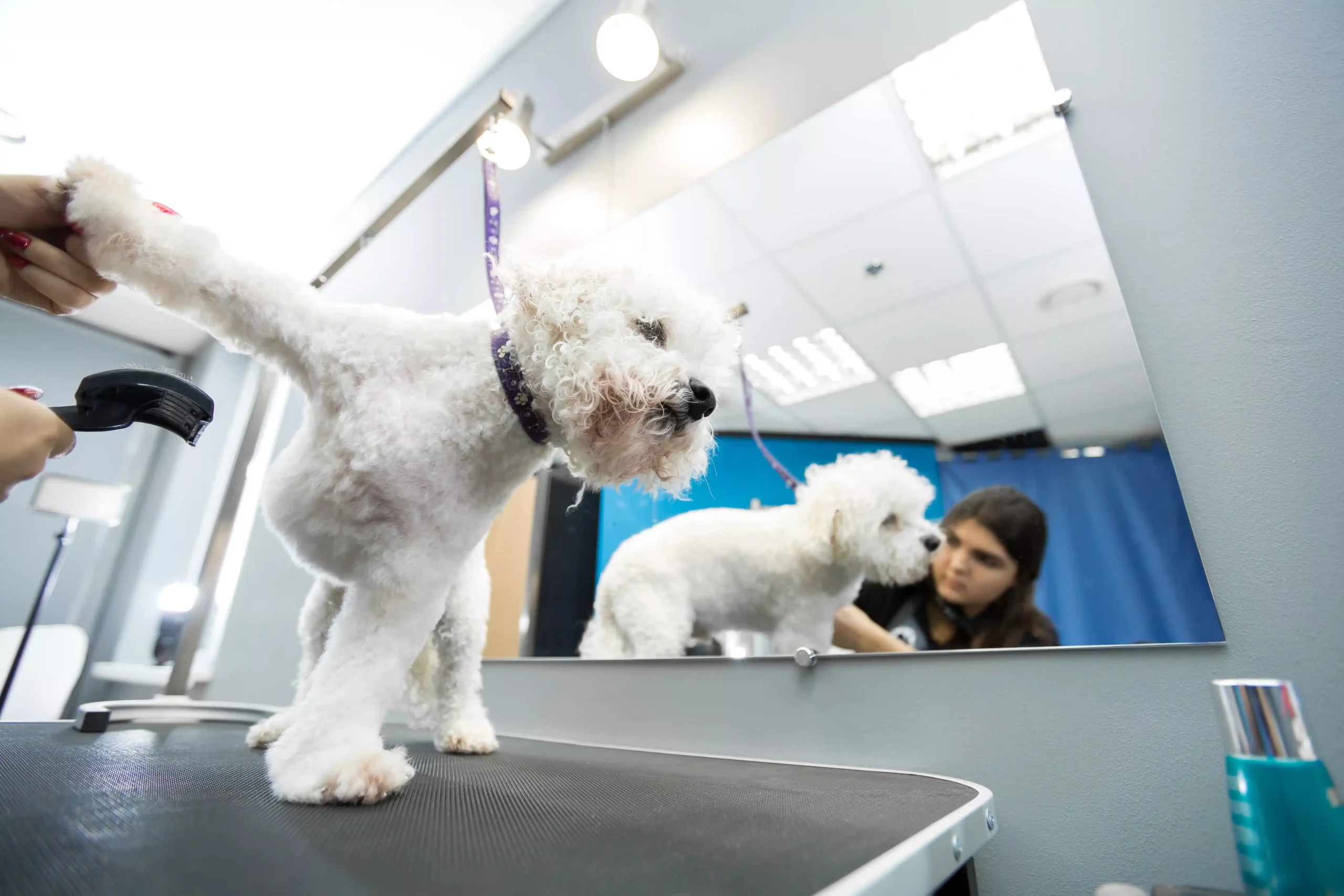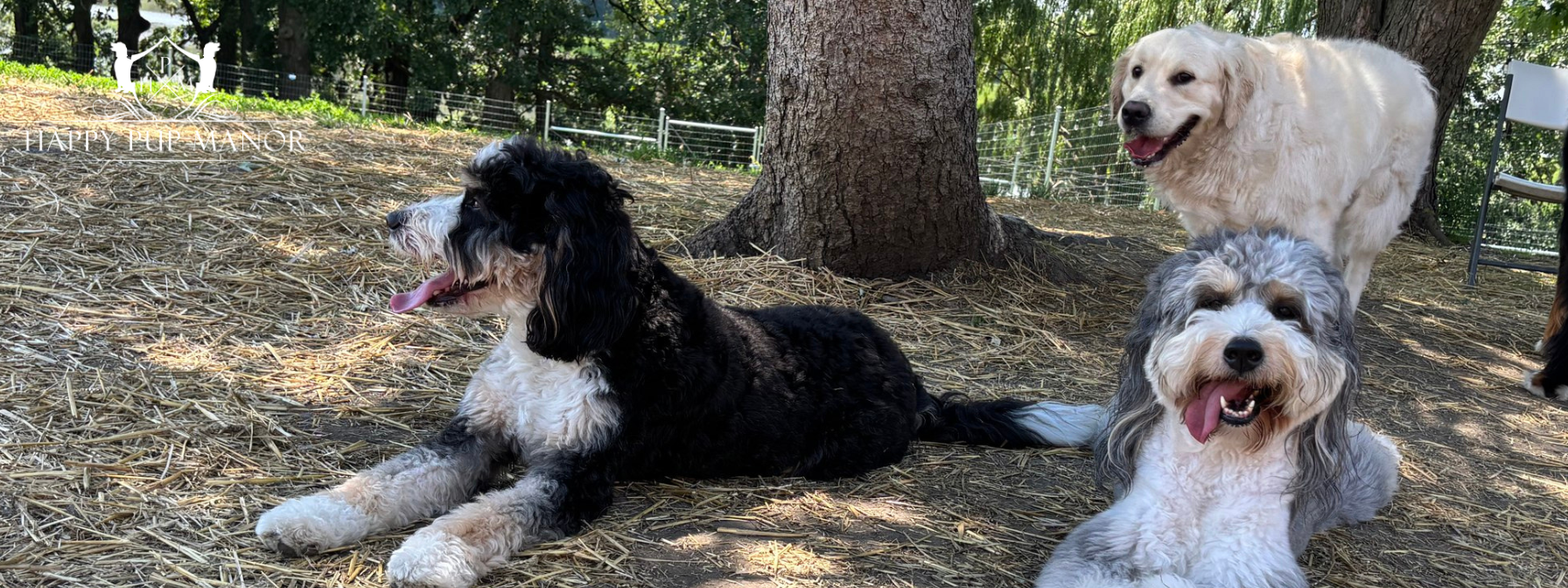Pet First Aid 101: What Every Dog Owner Needs to Know

Pet First Aid 101: What Every Dog Owner Needs to Know
Emergencies aren’t something we like to think about, but being prepared is one of the greatest gifts we can give our dogs. While professional veterinary care is always the first step, knowing a few pet first aid basics can help you stay calm and take quick action while you get your pup the help they need.
At Happy Pup Manor, our passion goes beyond luxury dog boarding and elite dog training in Grayslake—we love helping owners feel confident in caring for their dogs in every situation. Whether your best friend is a pampered Doodle or a spirited rescue, these pet first aid tips will help you protect them when it matters most.
Why Pet First Aid Matters
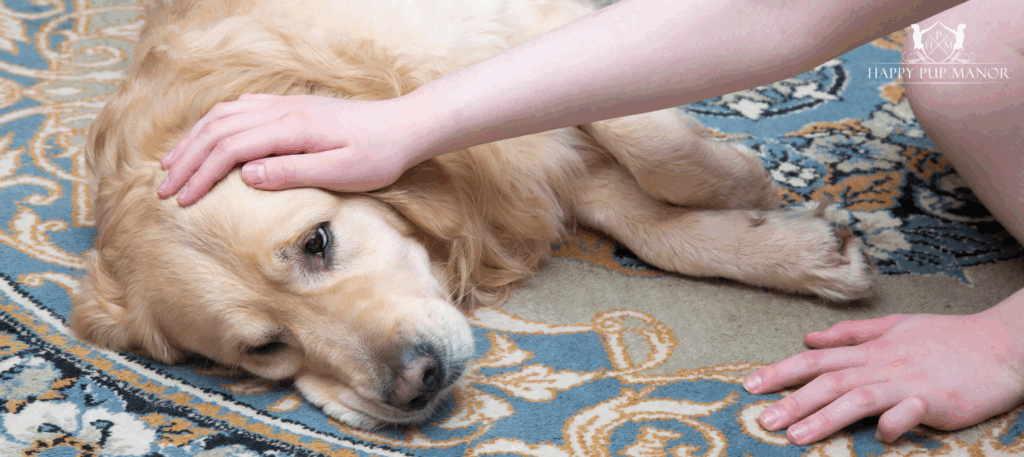
From accidental poisonings to cuts on the trail, life with dogs can bring the unexpected. Emergencies can happen in the blink of an eye. When they do, your ability to take swift, informed action could mean the difference between a minor issue and a serious medical emergency. The American Veterinary Medical Association (AVMA) reminds us that being ready—and knowing what to do—can dramatically improve outcomes for your dog while en route to veterinary care.
First aid for dogs isn’t meant to replace your veterinarian, but rather to bridge the critical moments between the incident and professional treatment. Whether you’re at home or on an adventure, having essential knowledge empowers you to take confident steps to stabilize your pup until expert help is available.
Benefits of Pet First Aid Knowledge:
- Faster response time – When every second matters, you’ll be ready to act quickly and effectively to protect your pup.
- Increased confidence – Knowing what to do helps you stay calm and think clearly, even in the most stressful situations.
- Better outcomes – Immediate action can stop an emergency from escalating, improving your dog’s chances of a full recovery.
- Peace of mind – There’s comfort in knowing you’re truly prepared to help your furry family member when it matters most.
- Preparedness anywhere – Whether you’re at home, hiking a trail, or on a road trip, your readiness goes wherever your pup does.
If you’re ready to take your pet safety knowledge to the next level, consider enrolling in a certified pet first aid course like the American Red Cross Cat and Dog First Aid class. These convenient online courses make it easy for even the busiest pet parents to get prepared. For on-the-go guidance, the Red Cross Pet First Aid app is another fantastic resource—putting expert tips and emergency help right at your fingertips, anytime, anywhere.
Common Pet Emergencies & What to Do
Understanding how to recognize and respond to common pet emergencies can be the key to saving your dog’s life. From poisonings and injuries to seizures and choking, quick and calm action can help stabilize your pup until you can reach a veterinarian. The tips below are based on trusted recommendations from the American Veterinary Medical Association (AVMA).
For even more detailed guidance, you can visit their official resource: AVMA First Aid Tips for Pet Owners.
Poisoning or Toxin Exposure

Poisoning is one of the most alarming emergencies a dog owner may face because it can happen quickly and with everyday items. Many common substances around the home, including certain foods, plants, and cleaning agents, can be harmful—even in small doses.
If you think your dog may have ingested or come into contact with a toxic substance:
- Remain calm and assess your dog for signs like vomiting, drooling, loss of balance, or labored breathing.
- If the toxin was on the skin or in the eyes, read the product label for safety instructions. Follow them as you would for human exposure—rinse thoroughly or wash with mild soap, avoiding contact with the eyes, mouth, and nose.
- Call your veterinarian, the ASPCA Animal Poison Control Center (888-426-4435), or the Pet Poison Helpline (855-764-7661) without delay. Do not wait for symptoms to progress.
- Be ready to share specific details: your dog’s breed, age, weight, what they were exposed to, how much, and how long ago. Describe any symptoms you’ve observed.
- Bring the packaging or container of the suspected toxin, and if possible, collect any vomit or chewed material in a sealed plastic bag to take with you to the vet.
Related Reading: Deadly Foods for Dogs: Essential Information for Responsible Pet Owners
Injuries, Bleeding, and Bites
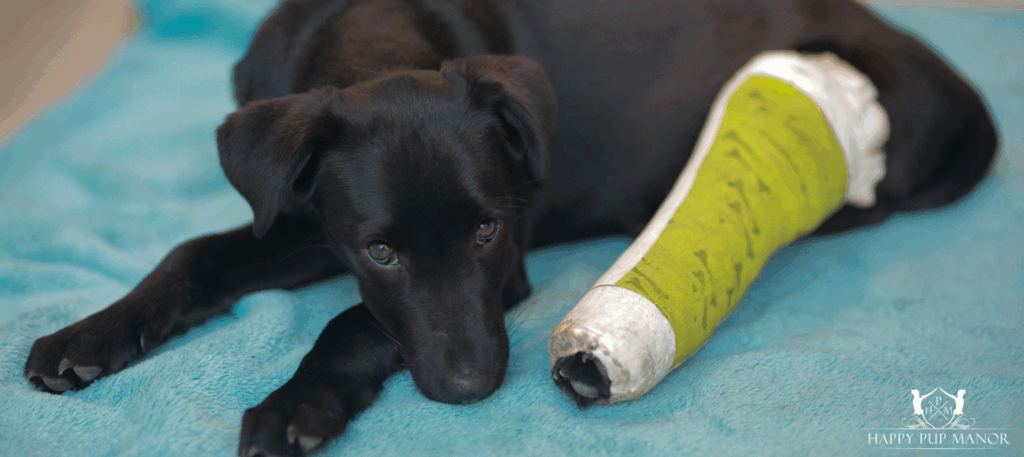
Whether it’s a misstep on the stairs or an unexpected scuffle at the park, accidents can lead to a range of injuries. From scrapes and broken bones to internal trauma, having a plan helps prevent small issues from becoming life-threatening emergencies.
Fractures
- Carefully place your dog on a firm, flat surface to avoid further strain.
- If you’re confident in how to do it safely, you can attempt to wrap or splint the injury—otherwise, wait for professional care to avoid complications.
- Limit movement by keeping your dog in a confined space during transport. For larger dogs, improvise a stretcher with a blanket, sled, or board.
Internal Bleeding
- Symptoms may include bleeding from the nose or mouth, pale gums, vomiting blood, or a weak, fast pulse.
- Keep your dog warm and quiet, and avoid unnecessary handling.
- Transport them immediately to the nearest emergency vet clinic.
External Bleeding
- Apply firm, direct pressure over the wound using a clean towel or cloth.
- Hold pressure without checking for at least three minutes to allow clotting.
- If blood soaks through the first layer, add another without removing the original. Head straight to your vet.
Burns
- Rinse the affected area with room-temperature water to cool the skin. Use caution, as your pet may react defensively.
- Lightly cover the area with a damp, clean cloth.
- Do not apply ointments or creams. Get veterinary care right away.
Eye Injuries
- Eye trauma can worsen quickly and may result in permanent damage if untreated.
- If visible, foreign debris like dust or grass can be gently flushed out using saline.
- Avoid trying to remove objects manually and prevent your pet from pawing at the area. Promptly contact your vet.
Snake Bites
- Always assume the snake was venomous. Time is critical.
- Try to safely take a photo of the snake for identification purposes—do not attempt to capture it.
- Do not bring the snake to the vet. Get your dog to emergency care immediately.
Heatstroke and Shock
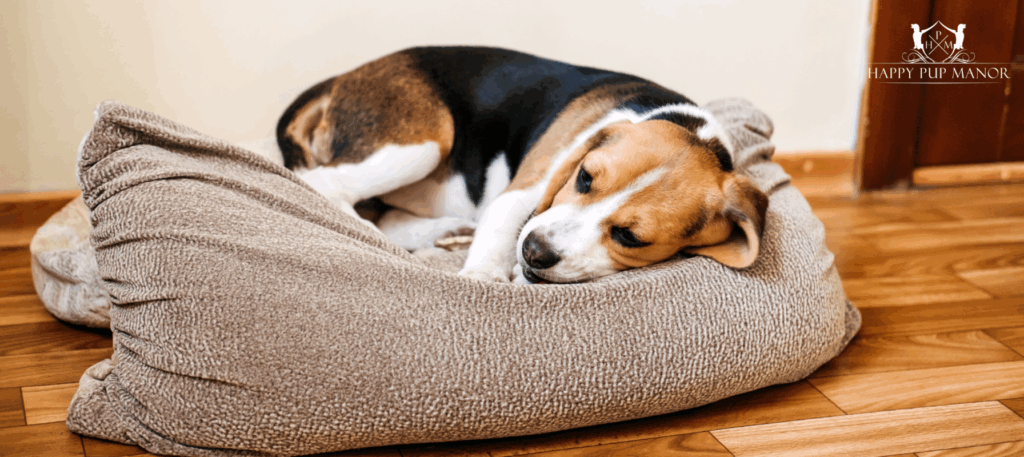
Overheating and shock are two serious medical emergencies that can occur suddenly and require immediate intervention. Dogs with thick coats, short noses, or underlying health conditions are especially vulnerable to heatstroke, while shock can result from trauma, blood loss, or extreme stress.
Heatstroke
- Watch for signs like excessive panting, drooling, vomiting, discolored gums, collapse, or confusion.
- Move your dog to a shaded or air-conditioned area right away. Apply cool (not ice-cold) wet towels to high-heat areas such as the neck, armpits, and groin. Rotate and re-wet towels to help lower body temperature.
- Offer small amounts of cool water if your dog is alert. Avoid giving ice or very cold water, which can worsen the condition.
- Never use ice baths. Always monitor your dog closely and prepare for transport to a veterinary clinic.
Shock
- Symptoms of shock include weak or rapid pulse, shallow breathing, glassy eyes, pale gums, or collapse.
- Keep your dog calm and quiet. Lay them down with their head level to their body, cover them lightly to preserve warmth, and avoid unnecessary movement.
- Shock can be fatal if untreated, so seek emergency veterinary care immediately—even if your dog appears to stabilize.
Seizures
A seizure can be frightening to witness, but your calm response is crucial to your dog’s safety. Seizures may result from epilepsy, poisoning, or underlying health issues, and they often appear as sudden collapsing, twitching, or paddling movements.
- Move nearby furniture and other hard objects out of the way to prevent injury during the seizure.
- Do not attempt to hold your dog down or try to stop their movements. This can result in unintentional injury to both of you.
- Avoid putting your hands near your dog’s mouth. Dogs may unintentionally bite due to involuntary muscle contractions.
- If possible, use a timer or note how long the seizure lasts. This information is important for your veterinarian.
- After the seizure stops, keep your dog warm, quiet, and comforted in a safe area. They may be disoriented for a short time.
- Contact your vet immediately if your dog has more than one seizure in a 24-hour period, if a seizure lasts longer than 5 minutes, or if the seizure activity continues without full recovery in between episodes.
Choking

Choking is a life-threatening situation where a dog struggles to breathe due to a blockage in their airway. Signs include gagging, pawing at the mouth, distressed breathing sounds, and blue or pale gums or tongue.
- If your dog is still able to breathe, do not attempt to remove the object unless it’s clearly visible and easily grasped. Keep your dog calm and transport them to the nearest veterinary clinic immediately.
- If you can see the object inside the mouth and feel confident, carefully open their mouth and attempt to remove it with your fingers. Use caution—avoid pushing it deeper and never place your hand blindly into the mouth.
- For small dogs, if you cannot remove the object manually, gently pick them up by the thighs and swing them side to side to help dislodge the item. If unsuccessful, try applying gentle pressure to the abdomen just behind the ribcage.
- For larger dogs, perform the Heimlich maneuver. If the dog is standing, wrap your arms around their abdomen and place a fist just below the ribcage. Apply a quick, firm upward thrust. If the dog is lying on their side, place one hand on their back for support while using the other to press upward and inward on the abdomen.
- Once the object is removed or dislodged, seek veterinary care right away—even if your dog appears to recover.
CPR and Rescue Breathing

When your pet isn’t breathing, time is critical. Staying calm and knowing what to do can save their life before you reach emergency care.
Rescue Breathing
- Gently open your dog’s mouth and carefully pull the tongue forward so the tip rests outside the mouth.
- Look inside the mouth and throat for any visible obstruction. If you see something and it’s safe to do so, remove it carefully without pushing it deeper.
- Close your dog’s mouth and create a seal by breathing directly into their nose. Watch for the chest to rise.
- Continue giving one breath every six seconds (approximately 10 breaths per minute) until your dog starts breathing on their own or until you arrive at the vet.
CPR
- Lay your dog on their side (or on their back if they have a broad chest, like a Bulldog).
- Place your hands over the widest part of the chest. For smaller dogs, use one hand.
- Perform 30 quick, firm compressions at a rate of 100–120 per minute.
- Follow with two rescue breaths. Repeat the cycle until your dog recovers or professional help arrives.
Pet First Aid Kit Essentials: Why Each Item Matters
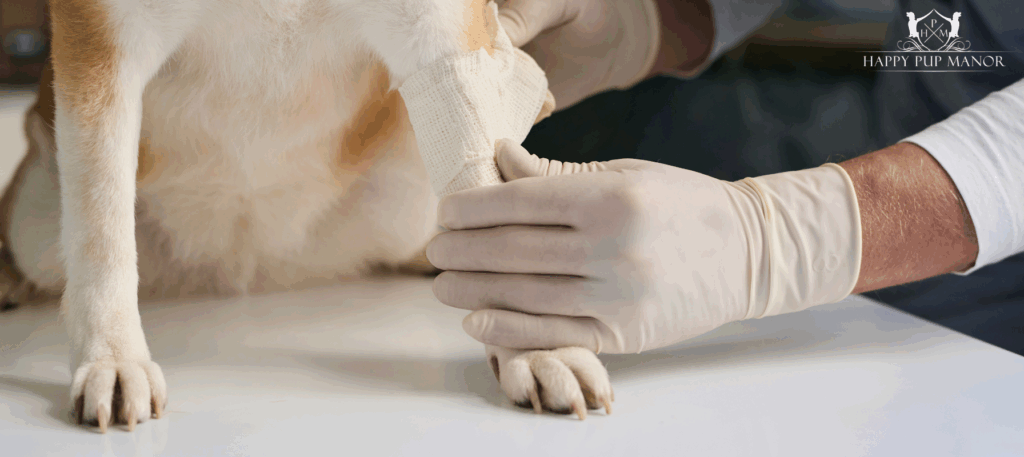
A thoughtfully assembled pet first aid kit is more than just a checklist—it’s a tangible expression of love and preparedness. Here’s a detailed look at what to include and why each item plays a vital role in keeping your pup safe during an emergency.
Important Phone Numbers
In a crisis, clarity is everything. Keep both printed and digital copies of emergency contact information, including your regular veterinarian, the nearest 24-hour animal hospital, the ASPCA Animal Poison Control Center, Pet Poison Helpline, local animal control, and non-emergency police. Having quick access to these can shave off critical seconds and help you stay calm when time is of the essence.
Animal Poison Control Center
http://www.aspca.org/pet-care/animal-poison-control
888-426-4435
Pet Poison Helpline
https://www.petpoisonhelpline.com/
855-764-7661
Medical Records
Up-to-date vaccination history, allergy details, medication lists, and ongoing treatments can be lifesaving information for any attending vet. Keep a waterproof pouch in your kit to store these documents so you can hand them off immediately if you’re rushed into an emergency clinic.
Digital Thermometer

Dogs can’t tell us when they’re too hot or cold. A thermometer like the iProven Dog & Cat Thermometer lets you monitor for fever (above 103°F) or hypothermia (below 100°F), which are common signs of heatstroke, shock, or systemic illness. A flexible tip ensures comfort during rectal use—the most accurate method for pets.
Gauze Roll
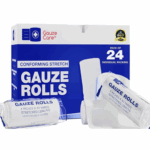
Gauze is one of the most versatile tools in any pet first aid kit. Use it to control bleeding, wrap wounds, pad an injury, or stabilize a leg. It’s lightweight, easy to store, and essential for both minor scrapes and more serious trauma.
Nonstick Bandages or Tape

Traditional adhesive bandages stick to fur and can cause discomfort or even injury when removed. Self-adhering wraps like WePet Pet Wrap cling to themselves but not your pup’s coat—offering gentle yet secure support for wounds and dressing changes.
Adhesive Tape

Cloth adhesive tape helps secure gauze or bandages, especially over hard-to-wrap areas like joints or paws. A durable option like Nexcare Durable Cloth Tape is essential for holding everything in place when your dog is on the move or restless from pain.
Scissors (with blunt ends)
Trimming gauze, cutting tape, or removing fur around a wound requires precision and safety. Pet-safe, blunt-ended scissors prevent accidental punctures during stressful situations.
Gloves
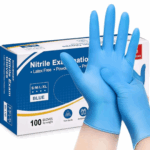
Disposable gloves like the Schneider Nitrile Exam Gloves protect you from contamination and help maintain hygiene when handling open wounds, blood, or other bodily fluids. They also reduce the risk of transferring bacteria to the injured site.
Muzzle
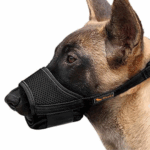
Even the gentlest dogs may bite when in pain or fear. A soft, adjustable muzzle like the HEELE Dog Muzzle keeps both you and your pup safe while providing enough space for breathing and limited panting. Never use a muzzle on a dog experiencing breathing issues or heatstroke.
Saline Solution
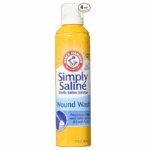
Use saline to flush dirt, sand, or debris from wounds or eyes. The Arm & Hammer Simply Saline Wound Wash is gentle and sterile—ideal for cleaning before bandaging or reducing eye irritation after outdoor play.
Antiseptic Wipes

Products like CeraSoothe CHX+KET wipes help clean and disinfect minor wounds, reducing the risk of infection. Ideal for scrapes, bug bites, or cuts—especially after hikes or playtime in wooded areas.
Cold Pack

A single-use Instant Cold Pack helps reduce swelling from sprains, stings, or bruises. It’s a fast, no-freezer-required option for managing pain and inflammation until professional care is available.
Eye Dropper or Syringe
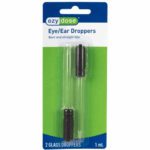
Administer oral medications, rehydrate with electrolytes, or flush small wounds using a precise dispenser like the EZY DOSE 1mL Eye & Ear Dropper. A must-have for delivering controlled doses, especially with small breeds or puppies.
Lubricating Jelly
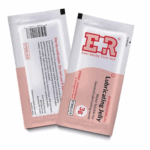
Use sterile lubricating jelly to ease thermometer insertion or to protect wounds and eyes before transport. It’s especially useful if your pet’s eye has a scratch or foreign particle and you’re waiting on veterinary treatment.
Hydrogen Peroxide (3%)
When recommended by a vet, 3% hydrogen peroxide can be used to induce vomiting after a dog eats something harmful. Never use without clear instructions—it’s only effective for certain toxins and can be dangerous if misused.
Small Flashlight
A flashlight lets you inspect wounds, eyes, or paws in low light—whether it’s nighttime or inside a dimly lit vehicle. It’s also helpful for locating ticks or splinters.
Tweezers
Essential for safely removing splinters, thorns, bee stingers, or ticks. Choose a pointed-tip tweezer for precision but avoid squeezing the body of a tick, which can increase the risk of infection.
Clean Towels
A multi-use tool for any emergency. Towels can be used to clean wounds, restrain your dog safely, serve as a makeshift stretcher, or provide padding during transport. Keep a couple in your car and your home kit.
Spare Leash & Collar
Emergencies often arise away from home—having an extra leash and collar allows you to safely secure a panicked or injured dog. If your usual gear breaks or gets lost, you’ll be glad you have a backup.
Activated Charcoal (vet-guided only)

When directed by a vet or poison control, activated charcoal can help absorb toxins after ingestion. Do not use without professional guidance—timing and dosage are critical, and in some cases, it may worsen the condition.
Ready-Made Kit
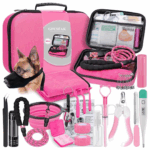
You can also purchase a ready-made pet first aid kit to save time and ensure you have the basics covered. These kits often include essentials like gauze, antiseptic wipes, and adhesive tape, making them a great foundation. However, it’s important to review the contents and customize your kit by adding any additional items your veterinarian recommends—especially if your dog has specific medical needs, allergies, or ongoing treatments. Tailoring your kit ensures you’re prepared for your unique pup’s needs no matter where you are.
Related Reading: How to Prepare a Dog Emergency Kit
Emergency Care at Happy Pup Manor
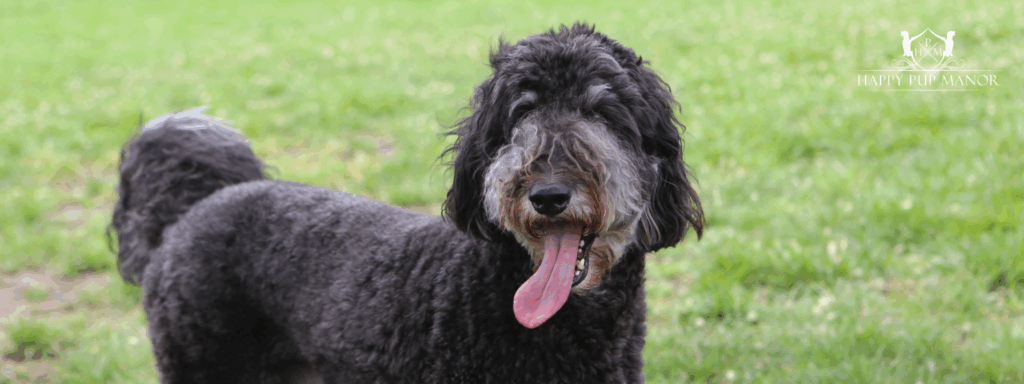
Whether your dog is enrolled in one of our training programs or enjoying a luxurious stay at our estate, their safety and well-being are always our top priorities. Our expertly trained staff is certified in basic pet first aid, emergency protocols, and safe handling techniques to ensure your pup is protected in any situation.
We take pride in providing not only comfort and elegance but also the highest standards of care and preparedness. Located in scenic Grayslake, Happy Pup Manor offers a refined boarding and training experience that delivers peace of mind—because your best friend deserves nothing less.
Preparedness Is a Form of Love
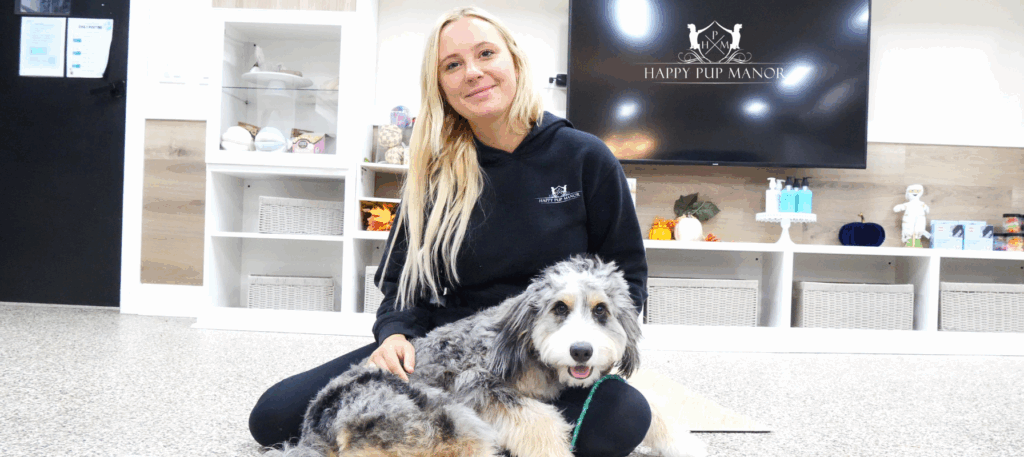
At Happy Pup Manor, we believe true devotion to your dog means preparing for the unexpected with the same care and elegance you bring to every other part of their life. Being ready for emergencies isn’t just responsible—it’s a powerful expression of love, protection, and confidence.
By familiarizing yourself with pet first aid, you’re taking a proactive step that can make all the difference in those crucial moments. Whether you’re at home, on a weekend getaway, or dropping your pup off for a stay with us, you’ll have the knowledge and readiness to act swiftly and calmly.
Have questions or want to give your dog the very best in care, training, and comfort? Reach out to our team at Happy Pup Manor—we’re here to help you every step of the way. Get in touch and discover how we make safety, luxury, and expertise a way of life for your pup.
Keep Reading: How to Find a Good Vet for Your Pup




